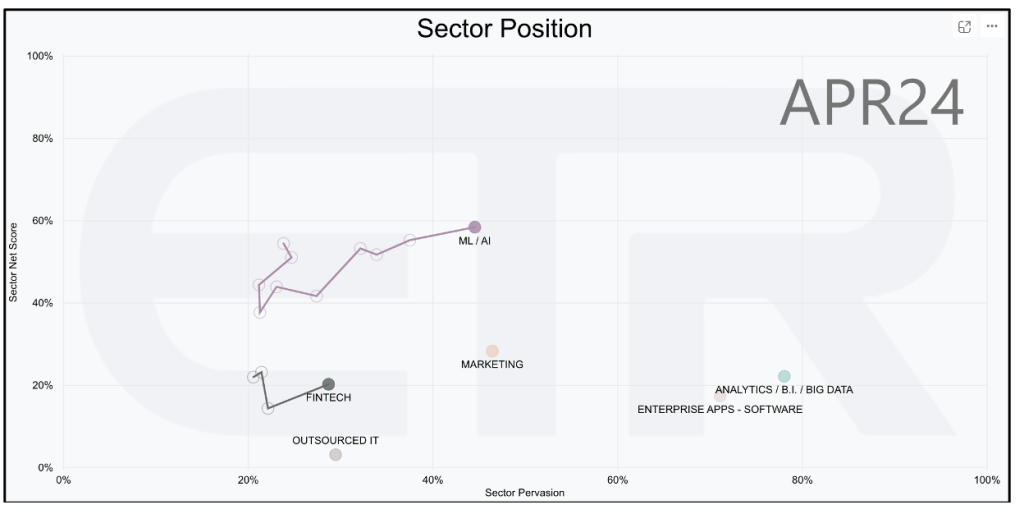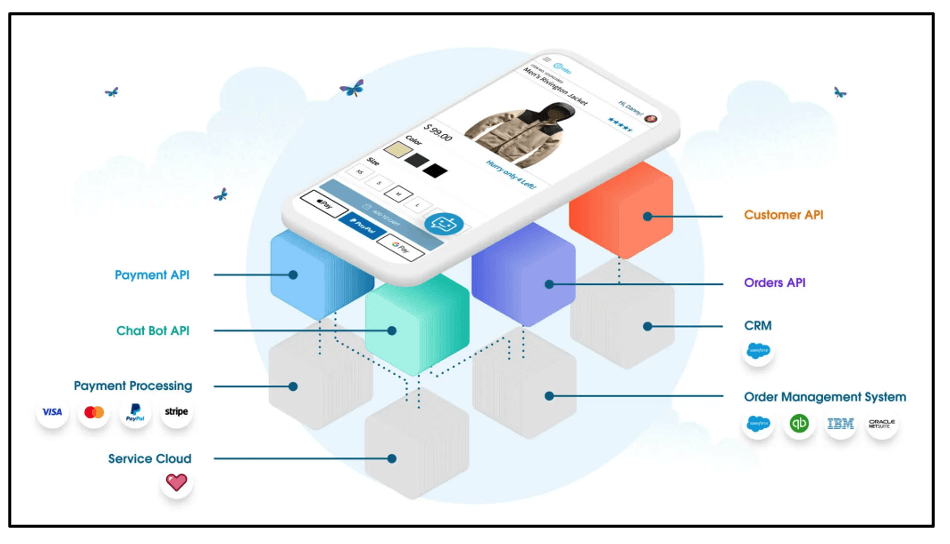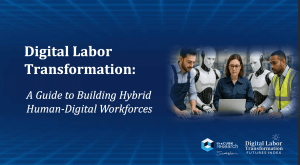Salesforce, one of the overall leaders in commerce and marketing solutions, is well-positioned to understand the challenges around data management that today’s business leaders face. That’s why we see Salesforce’s novel approach to data integration with a new multi-tiered API capability to help drive Salesforce Commerce Cloud as a smart move.
Digital commerce vendors are competing to add functionality that will allow customers to serve better user experiences. Customers of commerce software and platforms are increasingly looking to implement personalization and intelligence by leveraging new AI and data-driven functions.
For the customers of commerce software or platforms, the goal is simple: better experiences for their end users means more potential revenue for their businesses.
But the challenge to enabling these new intelligent functions starts with knitting together data from multiple subsystems to drive the right customization at the right time. That’s where Salesforce’s Commerce Crowd, powered by Salesforce Data Cloud, comes in.
Salesforce Commerce Cloud Separating from the Pack
As the commerce domain matures and vendors look for new opportunities for growth, newer data-driven experiences have started to show results, and the Salesforce Commerce Cloud is most definitely ahead of the pack. Customers are leveraging previously untapped revenue potential in their commerce platforms in a variety of forms:
- Fewer abandoned shopping carts as customers are served up real-time coupon offers during the discovery/shopping experience
- More repeat purchases due to better-integrated loyalty programs
- Larger average purchases facilitated by identifying high-value customers in real-time and customizing offers for them
Data from our partner ETR’s spending intent surveys show the sector’s correlation with AI/ML. As you can see from the below, the sector has seen steady growth over the past few quarters.

Within the overall sector, Salesforce Commerce Cloud has been one of the stand-out, high-performing products, right alongside Stripe, in separating from the pack. These positions show the deep immersion and inroads these companies have made in the digital commerce area and how very far behind many of their competitors are. Not surprising, with Stripe dominating the market in payments processing and Salesforce with its deep integration throughout organizations, it’s a natural choice when looking to maximize digital commerce efforts.

Salesforce Empowers Commerce Cloud with Data Integration Layer
To help maintain its market lead, Salesforce has recently beefed up its adjacent Data Cloud offering with new capabilities that allow Salesforce Commerce Cloud customers to drive data-driven experiences more easily and with greater agility.
The new capabilities allow Salesforce Commerce Cloud customers to map out a specific experience they are trying to create — call it a target experience — and then achieve it using a workflow-based approach that assembles the needed data in real time to drive the experience.
This approach contrasts older approaches, which may have relied on pre-formed data “products” or structures to enable the experience. When the target experience changed or evolved, then the data product would potentially have to be rebuilt.
In this new experience layer approach, data is collected via APIs linked to the target experience. However, as data sources change and evolve, the workflow that defines the experience can remain the same, independent of the process for collecting the data.
In a recent interview with senior analyst George Gilbert as part of our Road to Intelligent Data Apps series, Param Khalon of Salesforce explained the capability as follows:When explaining the new 3-layer ‘Experience’ Architecture, we think of a composable API-led architecture as a 3-layered API. First, there is the Experience
API, which is used to drive experiences that you’re going to deliver to either employees or consumers on a website … beneath that Experience API there is the Process API and the Raw API.
So, you can look at, for example, your loyalty management system today as an Experience API that gets used by both consumers and employees that are managing transactions with customers and they’re powering different interfaces and experiences for them.
But over time, you might decide to acquire another loyalty system or start to redeem loyalty points on another partner. All of that can happen without having to sacrifice the experience you’re delivering to the customers because all of them are built using this 3-layered API interface where the Experience API doesn’t change, but the Process API and Raw API that powers the Experience API continues to change.
See the full conversation with Salesforce’s Param Khalon as part of our Road to Intelligent Data Apps series here:
Salesforce’s MuleSoft Anypoint API Experience Hub Delivers Big Benefits
Salesforce’s recent announcements of the MuleSoft Anypoint API Experience Hub, which is part of MuleSoft’s universal API management platform, allows for the quick and easy development of customized API portals and even provides templates to speed the process. The company has also addressed integration challenges by integrating gen AI capabilities into its Anypoint Code Builder, an integration platform from MuleSoft. Not only will gen AI speed integration, it also enables developers the tools they need to connect applications and systems.
The company has also quickly moved to add intelligence to its offerings, announcing the addition of Service Intelligence within its Service Cloud in late November of last year. Powered by Salesforce Data Cloud, the company’s hyperscale data engine, this is designed to provide an assist to customer service agents by providing all the information they need at their fingertips.

From Exhaust to Powering Applications
Stepping back from the new Experience layer offering, Salesforce has been riding the transformative power of data for a while. In my recent interview with Rahul Auradkar as part of our Road to Intelligent Data Apps series, which focuses on the modernization of data platforms, Salesforce has witnessed an almost complete inversion of how data is used in the next generation of applications.
Auradkhar explained this new data “inversion” in the application world:
Our mission has always been that we want to get our customers to become customer companies. So, if you take a look at, if you take a step back and take a look at how the days in the past when enterprise applications like CRM prioritized business logic and efficiency through automation, while data analytics and AI were relegated to other systems.
In some sense, intelligence was relegated to other systems. Data was an exhaust from apps and was used for analytics and later for AI. And that was a realm of different departments within enterprises.
Now, there has been an inversion.
The inversion that we are seeing is where data is defining processes. And AI is making those processes dramatically effective and more efficient.
That’s the journey we are on. We’ve already started really transforming our customers … and essentially new applications, that we believe will prioritize engagement and experiences driven by data, AI and automation, which will now drive business processes and not the other way around.
Watch the full Road to Intelligent Data Apps interview with Salesforce’s Rahul Auradkhar here:
Wrapping up, the jury is in on this one: Salesforce’s rapid and deep embrace of transformation has made Salesforce Data Cloud the fastest-growing organic innovation in its history. That’s no small accomplishment. We look forward to continuing to monitor the evolution of the digital commerce space and will be closely tracking inroads made by Salesforce — and other players in this sector — in the coming months.
Other related coverage you might be interested in:
Check out our Road to Intelligent Data Apps series here for other insightful conversations on the evolution of the modern data platform.



